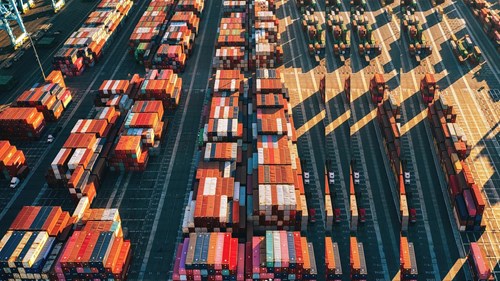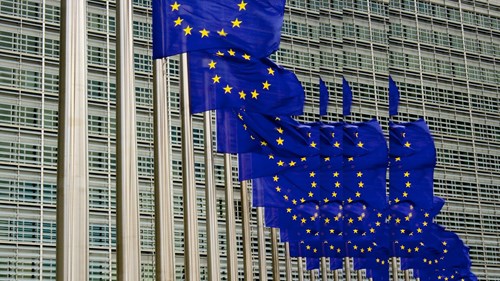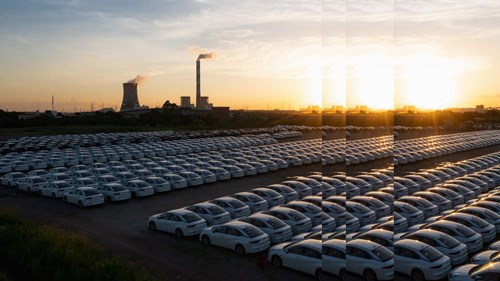Trade under Trump 2.0
On Wednesday, 5 November 2024, Donald Trump won the 2024 US presidential election. His return to the White House is likely to have far-reaching consequences for the US and world politics, but also for international trade law. The following insight will take a closer look at what the EU and EU industry can expect from “Trump 2.0”.
During his first term, US President Trump already introduced his “America First”-policy, which emphasized the United States’ unilateral economic needs. For international trade, this policy materialized in the breakdown of the WTO’s Appellate Body, the renegotiation of NAFTA (which was relabeled USMCA) and a tariff war with, among others, China. President-elect Donald Trump’s second term will not only follow up on his first term but is expected to put an even stronger emphasis on the US’ unilateral interests, which pundits predict will translate to a myriad of protectionist measures.
Trade under Trump: what we know so far
During his campaign, President Trump already announced across-the-board tariffs of 10 percent to 20 percent tariffs on imports, with the aim of bringing manufacturing jobs back to the US and restricting foreign access to the US market. The US President can impose import tariffs unilaterally. These tariffs would severely affect the EU’s export-driven sectors such as automotive and machinery industries.
Further, President Trump will likely reinstate tariffs on steel and aluminum. They were originally imposed by Trump in 2018 on national security grounds at rates of 25 percent on steel and 10 percent on aluminum. After the election of President Biden, the EU negotiated a steel and aluminum agreement and created the Trade and Technology Council (“TTC”), an informal forum between US and EU officials to foster the transatlantic partnership in areas where cooperation is needed and common ground exists.
Regarding China, Trump has announced that he will impose import tariffs of up to 60 percent on Chinese products. Such measures would indirectly also impact the EU economy: Chinese companies would turn their attention the EU market and would try to compensate for the loss of US businesses by increasing exports to Europe, resulting in more intense competition with European companies. Furthermore, there are indications that President Trump’s trade agenda might include pressuring European tech companies to align with US export controls or sanctions against China.
EU’s toolbox to withstand Trump 2.0
The EU Commission has been preparing for a second Trump presidency in recent months and has instructed its experts on trade and competition to assess EU policy responses.
When Trump first imposed tariffs on EU steel and aluminum in 2018, the EU retaliated against part of these tariffs, which did not help de-escalate the situation. In addition, it started a formal dispute settlement procedure against the US before the WTO. President Trump also threatened to impose tariffs on EU car exports, which, however, never materialized. At the same time, the situation revealed legal gaps in the EU’s toolbox to respond to such attempts of a tariff war.
This time, the EU is better prepared with substantial economic security tools. They enable the EU to adopt countermeasures and retaliatory instruments which can serve as leverage in negotiations with the Trump administration.
For starters, the EU has reserved the option of imposing significant tariffs on US goods shortly after President Trump’s inauguration in January 2025. The EU initially imposed these rebalancing tariffs, which target politically sensitive US products, during President Trump’s first term. They were temporarily suspended after the EU and the US agreed on a steel and aluminum agreement under the Biden administration. The EU could reimpose them quickly in response to US tariffs.
The range of levers to be deployed in reaction to US actions also includes the Anti-Coercion Instrument (“ACI”), which entered into force in December 2023. This instrument allows the EU scope to impose tariffs and other trade restrictions on third countries that the Commission deems to be exerting excessive economic pressure on the EU. The ACI was originally designed with President Trump in mind. In addition, the EU Commission is vested with powers to carry out ex-ante investigations against US companies operating in the EU and found to be unfairly benefiting from US subsidies under the Foreign Subsidy Regulation.
Despite these legal tools, trade tensions with the US are on the horizon and will negatively impact EU industry and EU exporters in particular. The re-election of President Trump thereby further complicates the EU’s tense trade-relations with China. Last week, the EU introduced countervailing duties on Chinese electric cars. EU car manufacturers already fear Chinese counteractions directed at them.
At the same time, the newly confirmed EU Commissioner for trade Maroš Šefčovič is eager to continue transatlantic cooperation, i.e. by fostering the TTC, and has underscored that the EU was not interested in trade wars. Though the latter statement responded to a question regarding China, it can be also interpreted as a signal towards the US.
Despite the EU Commission’s continued openness towards the US, EU businesses must prepare for a period of uncertainty, increased costs of trading with the US and overall tensed transatlantic economic relations under Trump 2.0.











